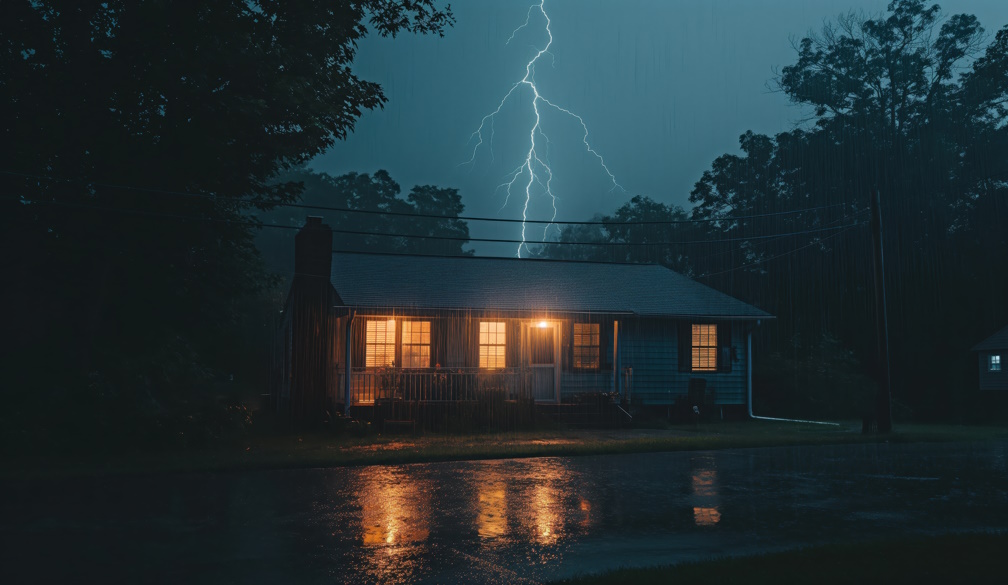Why Your Property Might Be at Risk During Heavy Rainfall (And What to Do About It)

Heavy rainfall can do more than just spoil your weekend plans — it can quietly wreak havoc on your property. What seems like a harmless downpour can quickly become a major threat to your home’s foundation, garden, drainage systems, and even your safety if the right preventative steps haven’t been taken.
The truth is, many homeowners aren’t aware of the risks until they’re facing waterlogged lawns, shifting soil, or worse — costly structural damage. But with the right awareness and simple fixes, you can prepare your property to handle whatever the weather throws its way.
How Rainfall Can Damage Your Property
When heavy rain hits, water needs somewhere to go. If your property doesn’t have the right systems in place to direct and absorb water efficiently, several things can happen:
- Flooding: Overflowing gutters, blocked stormwater drains, or poor yard grading can cause water to pool near your foundation or inside basements and garages.
- Erosion: Water can wash away topsoil, destabilising garden beds, paths, and retaining walls.
- Mould and mildew: Moisture trapped in walls, floors, or insulation creates the perfect conditions for mould to grow — and it doesn’t take long.
- Cracked foundations: Repeated saturation and drying of soil around your home can lead to structural stress over time.
Even seemingly minor issues like patchy grass, persistent puddles, or sagging fences can be signs your property isn’t draining properly.
The Overlooked Risk of Vegetation Mismanagement
One of the most common culprits behind water-related property problems is overlooked or unmanaged vegetation. Trees, shrubs, and even thick grass can interfere with natural drainage — especially when overgrown or poorly placed. In many cases, addressing this starts with responsible vegetation removal to help redirect water flow, clear blocked paths, and protect structural elements.
Clearing or thinning vegetation (especially in overgrown or sloped areas) allows for better water absorption, improved airflow, and reduced risk of root-related drainage issues. It's a small action that can dramatically improve how your property copes during heavy rain.
Spot the Warning Signs Early
Before the next storm rolls in, it’s worth taking a walk around your property and looking for these early warning signs:
- Water pooling near your home’s foundation
- Downpipes that discharge directly next to walls
- Soggy patches in the lawn or garden long after rain stops
- Moss or algae growth in shaded, damp spots
- Visible soil movement or cracks near paths, driveways, or retaining walls
If you spot one or more of these, it’s a good sign your property may need better water management.
Drainage Fixes That Actually Work
Thankfully, there are some tried-and-true strategies to help your property handle heavy rainfall without taking a hit.
1. Extend Downpipes and Redirect Flow
One of the easiest upgrades is to extend downpipes away from your home’s foundation. Use extensions or underground piping to direct water towards garden beds or safe runoff zones — never towards the house or fence lines.
2. Install a French Drain or Swale
A French drain is a gravel-filled trench that redirects water away from areas where it pools. A swale, on the other hand, is a shallow, grassy ditch that encourages water to soak into the soil slowly.
Both are effective, low-maintenance solutions for managing large volumes of water on sloped properties or yards with poor soil absorption.
3. Aerate and Improve Soil
Clay-heavy or compacted soils struggle to absorb water quickly, leading to surface runoff. Aerating your lawn and adding organic matter (like compost or mulch) improves absorption and encourages deeper root systems that hold soil in place during wet weather.
4. Use Strategic Landscaping
Smart landscaping can make a huge difference. Consider:
- Planting native, water-tolerant species with deep roots
- Creating raised garden beds to protect delicate plants
- Using gravel or permeable pavers instead of concrete paths
- Installing rain gardens to collect and absorb runoff naturally
These changes don’t just improve drainage — they can make your yard more attractive and eco-friendly too.
What to Do After a Storm
If your area has just experienced heavy rain, here’s what to check:
- Inspect gutters and drains for blockages or damage
- Check retaining walls and garden beds for signs of shifting
- Look for new cracks in paved areas or your home’s foundation
- Keep an eye (and nose) out for dampness or mould indoors
Early action is key. The faster you spot and address problems, the less likely they’ll snowball into expensive repairs.
Peace of Mind Starts with Preparation
You can’t control the weather — but you can control how your property responds to it. By understanding the risks of heavy rainfall and taking practical steps to manage water flow, you’ll save yourself time, money, and stress in the long run.
And perhaps most importantly, you’ll have the peace of mind that comes with knowing your home is protected — rain, hail, or shine.





